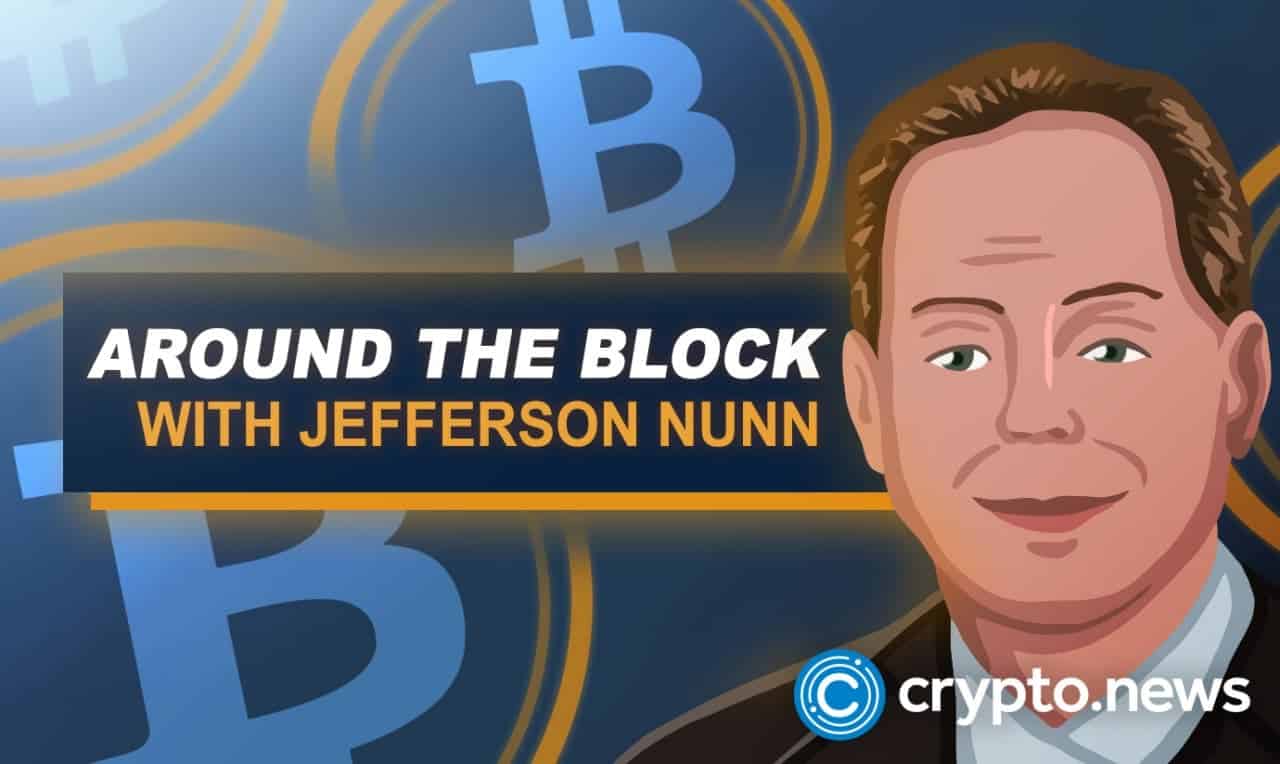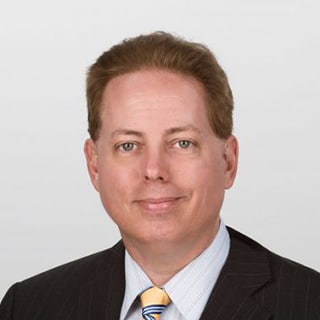1 Confirmation with Jefferson Nunn – Solve.Care Announces GTHE Available in 20 Countries

https://pod.co/1-confirmation-with-jeff-and-emilio/1-confirmation-with-jefferson-nunn-with-special-guest-pradeep-goel-of-solve-care
Jefferson: Welcome to another episode of One Confirmation. And I am joined here today with a very special guest, Pradeep Goel of solve.care.
Welcome, welcome. How are you doing?
Pradeep: Thank you Jefferson for having me. It’s always a pleasure and an honour. I’m doing very well, thank you.
Jefferson: Awesome. So I’ve been following solve.care now for several years. And it seems like now it’s available in 30 countries. Is that right?
Pradeep: Yes. So, we’ve launched the Global Telehealth Exchange. The open cross-border teleconsultation network on the blockchain that allows the Solve Token-based payments in 20 countries. And, we are expanding to 41. So, 20 are live and 21 more are coming in the next couple of months
Jefferson: That’s is great, great news. So this means, virtually almost anybody, anywhere in the world can access this application and access and see a doctor and get the care that they needed, right?
Pradeep: So it is correct, but I’ll give you an explanation here. If you look at every possible combination, regulatory combination, if any patient in any country could talk to every doctor in every country, you would have to essentially permit 40,000 plus regulatory relationships. Because about 200 countries on the left side and 200 countries on the right side and you multiply them you get 40,000 potential regulatory combinations. We call these combination S Care relationships, and keeping with our terminology, and each gay relationship can be individually configured in our system on our global telehealth exchange. So we have turned on the subset of these relationships for the 20 countries that regulation permits us to turn on. But the idea is step by step to activate as many of the 40,000 relationships as we can. But with the uniquely different configurations which can take into account, you know telehealth laws in the patient country, the provider licensing laws and the providers country, the crypto laws and using crypto to make a payment crypto laws and using crypto to receive a payment. The laws around data security, the laws around data custody and data, ownership, even laws around data residency.
So, each of these care relationships covers the whole gamut of how the patient can see the doctor, how the patient can share data with the doctor where the data sets where the data doesn’t sit, and how you make the payment in Solve Token or do you have to buy pay with a credit card, and then we will convert it into Solve Token behind the scenes, so that you are only dealing with allowed mechanisms in your country.
So, we are doing this in a global way, but we’re doing this in a very organised systematic way. And Solve Care’s platform is uniquely qualified to manage relationships. And that’s what we’re designed to do health relationship management. So, this whole idea of configuring 40,000 health relationships is what we’re doing today. So we launched 20. Of course, the goal is to launch all 200 over time, but I think we will get to somewhere north of 45 countries this year.
Jefferson: That’s incredible news. And I think it’s a game-changer for doctors as well. Because now they can have access to more patients plus those patients records are made more available to them.
Is that right?
Pradeep: Absolutely. So, the biggest thing for the doctor is that they define their digital practice on a platform on global telehealth exchange. So when they sign up, it’s totally voluntary. The physician is an open network, the physician does not need to be affiliated with, Mayo or Kaiser or Johns Hopkins or with any clinic they can be an individual practitioner and individual doctor, medical assistant, even physician assistants nurses will be added on to the system. So as long as they are clinically licensed, they can join the network. When they join the network, they get verified on the network to be clinically licensed and once we verify them they are on. This set up their digital practice. So in their practice, they define when they are available, at what rate they are available, what type of patients they’re willing to see what country the patient should be in, what the rate by patient by country is going to be. So, they can create this really powerful digital practice online, which we help them set up. Once a digital practice is set up, they can receive real-time payments and salt tokens from patients worldwide who will be matched with the doctor automatically. And that matching happens in the exchange. That’s why the global telehealth exchange, exchange is a magic matchmaking system like Stock Exchange like a Crypto Exchange. It’s an appointment exchange. So it matches the patient and the doctor based on all these eligibility criteria that the doctor has established. And that we have established in terms of regulatory rules, laws.
So, those two relationship parameters allow you to, for example, connect to a doctor in Sweden because US patients are allowed to see Swedish doctors as a second opinion, for example. And the Swedish doctors are agreeing that a particular doctor is agreeing to see a US patient under certain disclosures and consents. So it’s both what we permit at the relationship level, and then what the doctor wants at the practice level. So based on that, you could see a doctor in Sweden. And the reason I mentioned Sweden is because if you remember, when I started Solve Care, it was based on my personal experience that I couldn’t get care from my son in the US in Florida. So, I went hunting for somebody who could help him and I found somebody in Sweden. So, I wanted to make that happen enormously easier than it took me with all my resources and time and effort, how long it took us months, seven months to find the doctor we were looking for, and I should be able to do that in seven seconds. So that’s why Solve Care was built to open up access to care. Your health care should not be based on your zip code, or your ethnicity or your age or your gender or your even ability to pay. You should be able to find care somewhere in the world that makes sense to you. So, that’s the mission of Solve Care is to use blockchain to truly democratise healthcare and GTHE, Global Telehealth Exchange is our most proudest achievement in that regard. Not to mention that it drives up actually use a blockchain in healthcare, it shows how blockchain can actually work. And equally more importantly, it establishes solve as the global payment token for healthcare services.
So, those are the three things that GTHE accomplishes, Solve as a global payment system for patient-doctor consult worldwide, the blockchain as an identity, consent, transaction, and data sharing ledger. And then the truly open nature of our network to allow anybody to sign up either on the doctor side or on the patient side or both.
Jefferson: That’s fantastic, actually. I think it’s actually something that will really change healthcare. Because, for example, I know a friend of mine. And in this case, he was fortunate enough to be in the United Kingdom. But he went to see a doctor. And because he was having some chest pains. And it turns out, he had a very rare heart condition. And it just so happened that the world’s leading experts of that rare condition, live and work, just about 300 miles away from him. So he was able to see him in a matter of days, and get treatment, effective treatment, but I was just thinking, if that person was here in America, just like you say, they wouldn’t have easy access to that level of care.
Pradeep: Look, health care should not be based on chance, or your geography or your zip code, right. The fact of the matter is that if you happen to be living in an area where her quality of care is available, then you’re going to be better served and where if you’re not, but if you take that concept outside of the US and you go to any other country outside the G7, or the G20. The problem becomes increasingly acute. We haven’t launched in the US yet. We have launched in 20 countries we have stayed outside the US because we are still making sure that in the US state-based regulatory compliance is properly achieved. So, we are going to launch in the US in phase three, phase one is the 20 countries that we handpick. Phase two is 21 countries from Mexico to Argentina, the Latin American countries, phase three is the Middle East and Africa. And then we go into phase four into US.
Jefferson: Well, one, one question. I mean, thinking about like the COVID outbreak that we had, how would that kind of an outbreak be better managed with something like the global telehealth exchange?
Because, right now I see there’s a lot of very spotty and missing information about what’s really going on with people and all these different countries, for example, the Black Mold outbreak in India, not much is discussed about it. So could blockchain make a difference for this?
Pradeep: Well, I think when we improve access and privacy, so I’ll give you a very clear example of the answer is yes, a very, very clear example. One of the great unwanted outcomes of COVID has been the mental health impact has had on young people on old people on everyone, but acutely affecting those who are homebound. And you have huge impact on the mental health of healthcare providers themselves. So, mental health is a very sensitive matter, right. It’s a huge amount of stigma and a sense of lack of control attached to it far, far, far greater than clinical health issues. So in mental health, privacy is a big deal. Even worse, is that the mental health practitioners are highly, scars in terms of their availability. And they’re overloaded, because the ratio of mental health practitioners to 10,000 people in population size is far, far, far fewer mental health practitioners than clinical. So you have a very big imbalance between demand-supply, the demand shot up through the roof supply didn’t change. So, you have a very big issue there in terms of demand-supply, you have a big issue in terms of privacy and security. And people are uncomfortable going and accessing mental health online, they’re not sure who is watching who is reading who is collecting their data. So our system is we are very keen to focus on making mental health more accessible, as in addition to clinical health access. And one of the things that we can say that nobody else can say is, that your data never leaves your control, that your consults are totally private that billing is done at the digital level, we’re not sending your name, address telephone number to the other side to book a credit card, or charge for you. So, there is almost no patient identity leakage in our system.
So, you could essentially trigger a completely anonymous in person or online teleconsultation in video consult between a mental health practitioner and somebody is seeking health, mental health care without the physician necessarily knowing more than is absolutely clinically necessary, nor does the patient need to reveal any more than they are comfortable and even when they do, the data is not going into the hands of solve care or some insurance company. So, the patient data privacy in our system is at such a different level, the autonomy of the patient is at a much higher level as a result, there is access to care that people would normally not use telehealth solutions for.
We also just starting to work on a suicide prevention network. Same idea.
And that one is in collaboration with the entity in India that has done great work in that space. And we are building a care network for them on a platform that will allow people to seek care and the sad part is a majority of their callers seeking help from our you know, young people, they are young adults from teenagers to late 20s. And that’s the vast majority of their population calling into seek their final cry for help before they do something irreversibly harmful or tragic. So, we are able to take global telehealth exchanger to all kinds of very powerful human and humanity serving solutions that also are economically sustainable. Because in our world, there is no administrative overhead. All appointments are real-time, all payments are done at the point of appointment, refunds and cancellations are fully automated and fully handled by blockchain. There is nothing anybody needs to do except to deliver care or get care. And that was my mission to begin with. We have a long ways to go to really make this universally accessible care network. But we will step by step, make sure that as many of the 40,000 relationships that are possible are actually activated.
Jefferson: Which is amazing work. Another question along those same lines and is dear to my heart is, Biotoxin Foundation. You know, there are a lot of toxins in our environment. And doctors frequently miss diagnose what’s actually acute toxicity, for example, mold, or it could be a lot of other things. There’s plastics in our environment, just gas from the forest fires are actually harming people, where if you step outside, you’re actually breathing it in and then days later, you end up with that toxic overload and you don’t know it, why it’s happening to you. And by the way, KN-95 mass is not going to stop a gas from coming in, right.
So, all of those things are kind of coming to the forefront. And like I said, but doctors frequently ignore or miss diagnosing conditions. And there are patient networks if you roll out, there’s just begging for help. How can something like the global telehealth exchange help these patient audiences?
Pradeep: So, I think that that’s a very interesting and relevant issue. In many of these scenarios where we are dealing with physicians not having up-to-date information. What you’re really relying upon is specialists or highly trained clinical care providers to be able to step up Pain at the right time. And we are looking at scenarios where the patient can put out a request on the blockchain on our blockchain, essentially defining what their symptoms are. And in doing so letting the physicians nodes respond to it by saying, look, this is the kind of symptom I’m a specialist in. So, our view is that instead of trying to match patient and doctor just by need and availability and cost, in addition to that, we are looking to add a layer of matching the exchange function being enhanced to match by symptom and potential diagnosis, not actual diagnosis, actual diagnosis should done by the clinically trained person. So in this scenario, given, I think what we are serving that scenario in the future capabilities, not today there, but we are working on is where the patient cannot just say I need to see a general practitioner or an endocrinologist where they can say, these are symptoms I’m experiencing. And those symptoms can be analyzed automatically by the physicians clinical profile, their digital avatar, the definition basically sets up a digital avatar on the chain. And that avatar can say, look, I should be talking to this kind of a patient, this looks like something that I would know what to do with.
So in that scenario, we can deal with more rare conditions and acute, right. Because today when I have a headache, I call my general practitioner, he sent me off to maybe a neurologist, and we follow this long chain of discovery, till we figure out what’s wrong with me. But if we can actually do a more symptomatic analysis early on, and physicians with considerable knowledge of those particular symptoms, might be able to say, look, I think you may want to explore your environment for these toxins. See, that doesn’t happen unless it’s purely accidental today. So, we’re trying to take the accidental element out of healthcare, and we think that that will change, not just the quality of care will actually reduce massive amount of cost from the healthcare system, trillions if you will each year.
Jefferson: Exactly. And I think that’s been-the challenge is, some of these patients, like you say, they go through a long chain of discovery, I just read about one, they were misdiagnosed with anxiety with fibro, and only after several years, and then his feet just locking up, did they finally do an MRI and discovered that he has multiple sclerosis. And he had treatment earlier on, they might have been able to slow the progression, right. But he just didn’t match the typical profile of somebody with multiple sclerosis. And the beginning anyway. So yes, I think and you mentioned where there’s even a rare disease network, hundreds of thousands of people there that also need ongoing health and care. And then we go back to a specialist might be in the United Kingdom, but they’re in Australia, how can we match them up so that they can work together?
Pradeep: Yes. In a regulatory compliant way, and where the payment is guaranteed on both sides, proper handling of funds, and the consult can be followed up by an in-person visit locally. So the whole idea of the global telehealth exchange is trying to-we are blending teleconsultation with in-person care with a global payment system with patient data and privacy. And that combination is what we think the future of healthcare is. Future of healthcare isn’t just in facility care that we used to have. And it isn’t just all teleconsultations, which everybody thinks is the answer. It’s a very important and huge advancement. But it’s the blended care model, which includes preventative episode it can chronic care. And you’re dealing with care both in-person and online marriage to remote monitoring and continuous data collection in the control of the patient. Because the more data we’re going to collect, the more sensitive it’s going to become. So this really is the puzzle, if you will, those are the necessary pieces. And the global payment system is a critical piece of that that is often overlooked. Regulatory compliance is a critical piece of that which is often thought of as impossible to solve. And that’s what we have done. We have built a global payment system, we’ve built a regulatory framework for a global compliance model. We’ve built the online consultation framework, which many have done, so that’s nothing complicated. And now we are marrying it into devices. And then we are bringing in the chronic care protocols as well as rare disease protocols, as you just mentioned. And I think this is truly transformative. This is going to change the trillion-dollar industry very, very fast.
Jefferson: I agree, that’s right.
Pradeep: And yes, there are a lot of people who are going to fight it, but patients want it. The bottom line is I wanted, you wanted, our kids wanted, our parents wanted, so this is driven by human need not by the need of the healthcare industry to make more profit.
Jefferson: Yes. And that’s what we need, we started our discussion several years back, I think on a similar thought, people flying south to Mexico, and Cancun. I mean, who would want to go to Cancun for knee surgery, because it was 90% less cost there than trying to get that same lease or another word, co-payment, or deductibles was cheaper to do that sort of thing, then they get that same care here. But the problem goes back to how do we get the patient record, maintain it, follow-ups, all that.
Pradeep: Yes, I said recuperative care and the post-procedure care that is really important. So if we put the data truly in the hands of the patient in a secure manner that’s actionable and usable, we can build some continuity of care. But look, in many of the established EMR based care models, the data is the differentiator, and that data is locked up for a good reason. It’s not technologically difficult to share data, it’s business-wise, not appropriate to share data, because that’s considered as the property of the institution when it should be the property of the patient. But that’s a whole different debate.
The answer is both, the institution has a right to the data was stored as patient. And we seem to prioritize institutional rights to the degree that the patient doesn’t have access to data, right. But equally importantly, is this whoever has this aggregated view of data tends to monetize that, be it Facebook or be it health information exchanges. And that’s a question that one will rear its head again, and again, more we move to telehealth, digital health, the more questions going to be who has control over my data. And are they using it without my permission. And that is, I think, where Solve Care excels, we are truly focused on enabling care, not disrupting it, improving it, but also retaining control over data where custody should not equal ownership, data custody, does not mean that the custodian has right to do whatever they want. And that’s a consent-based model that we are very keen to, to expand around the world.
Jefferson: Which is great. I think even insurance companies, but actually be in favour of something like this. Right now, I had to get my patient records from over 40 doctors, and that man filling out 40 forms. Just send in the request for medical records. I had to pay to get my medical records. Because it takes somebody’s time to get a copy machine, copy it, and then put it in by fax or by actual snail mail. I couldn’t believe it. All have these came from a computer somewhere, why couldn’t my computer talk to that computer and download it? Which is what you solve with the global telehealth exchange, right.
Pradeep: Yes, I think from an insurance company perspective, assembling a truly longitudinal, clinic consumer or patient profile is practically impossible. And they actually don’t want to deal with it. Because as an insurer, I don’t want to have custody of that data, it can actually create huge amount of liability for me, but I do want my patient to have that data because I know that the more complete a record they have, the lower cost I’m going to have as a result of it. It’s that simple. If you have your complete medical record or near-complete medical record, then you’re going to have a lower cost of care, you will at least avoid some duplicate tasks, you will at least prevent some avoidable allergic reactions, you will have a better chance of identifying your recurring care needs, you will probably end up getting an annual checkup more likely because your doctor will notice that you haven’t had an annual checkup in two years. So, a complete medical record is very important from a cost perspective reduction perspective. But I don’t want to own it, because if I own it, then I am liable for all kinds of things, then the line gets very blurry on should I be telling you that you have a clinical risk, but I’m an insurance company, should I be telling you or should you be notified by a clinician or should I be telling your clinician that you have a clinical risk, and they should be contacting you, it gets messy.
But if you have a complete record, I can help you connect to the right doctor at the right time so that you can have better care. So as an insurer, the patient having a complete record is a safer better bet. Then the data being locked up inside 15 EMRs silos of data between different clinics. At the same time, if I’m an insurer, I can request from you a certain data from you, and use it with your consent to see if I can improve your care and maybe even reduce your premium if you agree to do that. For example, I can say to you, in our system you as an insurer, I can send you a care card saying, “Jefferson, if you accept this care card and I’ll analyze your care ledger to see if you have had sufficient preventative care visits with your doctor or maybe we’ll identify that you should begin an ophthalmology exam or whatever.” And those things would then be immediately available to you to take action on. So, it makes the insurance company a partner with the patient rather than an adversary.
So, as an insurer, I would love for my whole population to have control over and consent-based mechanism over all their data, except I can make it happen. Because the data is locked up in various healthcare systems, who don’t talk to each other. So long and short of it is yes, this is very beneficial for insurance, if properly utilized, where the insurance can reposition itself as somebody on your side of the table, who is working with you to keep you healthy, rather than somebody who is just trying to deny cost, right. So that’s where it is.
So, I think the future of better healthcare models are based upon patient-driven consented use of data, whether it’s by the insurance company, or by the employer, or by the doctor. And the patient can decide based on their consent mechanism, who they want, how much access to, and that’s really the model we’re going to move towards. Now there are many in the industry who feel like the current model is good enough. But look, all the metadata shows they’re not good enough neither care nor cost, nor quality, nor customer satisfaction is working. So, the end of the day changes upon us COVID accelerated a change dramatically from a physician clinical delivery side, the adoption of digital health is now a foregone conclusion for physicians. Patients are asking the question, Why do I have to get in the car and drive and I can do a tele consultant. But I think the next step is for insurers and government policymakers to understand how to use this trend to actually do better for the patient. And as I mentioned a few minutes ago, we’re getting much more involved in Washington and the policy conversations, to help people think about how to reuse this for the benefit of American citizens or humanity at large, and how to do so in a manner where patient rights are protected, not a further constraint. But GTHE is a huge step in that direction. GTHE only breaks down a lot of barriers. And I think over the next three to five years, we’re going to see GTHE type of a model become the only way we’re going to deliver care in the majority of the planet.
That’s my view. Of course, healthcare always is a challenge. But I think this is the right time is a perfect storm.
Jefferson: Exactly. Well, I really appreciate you being on the show. If somebody wants to find out more about Solve Care and the global telehealth exchange, what should they do?
Pradeep: So they can always visit us at solve.care, we have a telegram group Solve Care telegram group that is very active. There’s an email that’s [email protected] that we monitor and respond to very quickly for any inquiries. We have now appointed as a physician, we have appointed ambassadors in I believe 40 countries who are working with physicians, to educate them on how to use GTHE properly, how to sign up what it does, and how you can deliver better care more efficiently, and in fact, make more money. So, we are appointing more ambassadors around the world. But 40 are already I believe, operating in different countries.
So, there are multiple avenues. My statement would be if you’re a physician and you want to deliver better care to your patients get involved, pick up the phone or write us an email or sign up for GTHE on gthe.solve.care it takes one minute. And we’ll walk you through the rest of the process or connect with us and we’ll connect you to an ambassador who’s probably a physician like you, who will walk you through what they have done and what they are doing.
So, there are many ways but the ambassadors are signing up a GTHE ci or writing to us on [email protected] are simple ways to get engaged.
Jefferson: Great. I really appreciate you and support everything you’re doing. So thank you so much.
Pradeep: Thank you, Jefferson. It’s a pleasure as always












